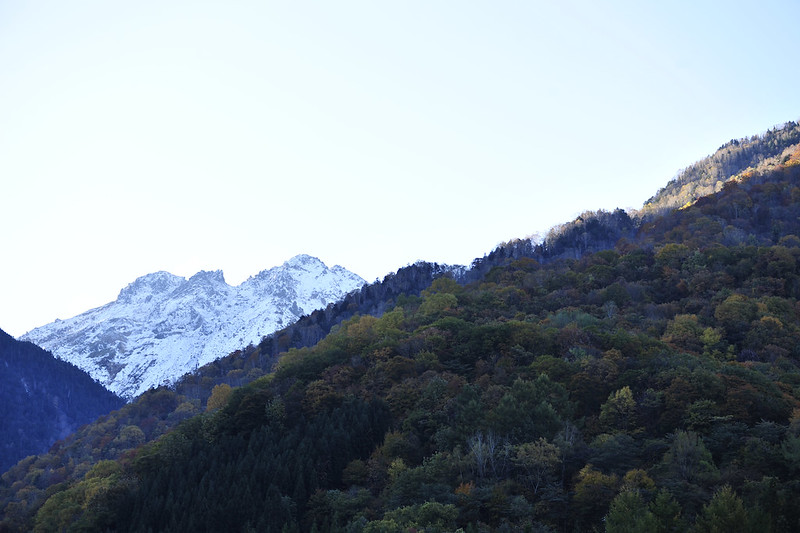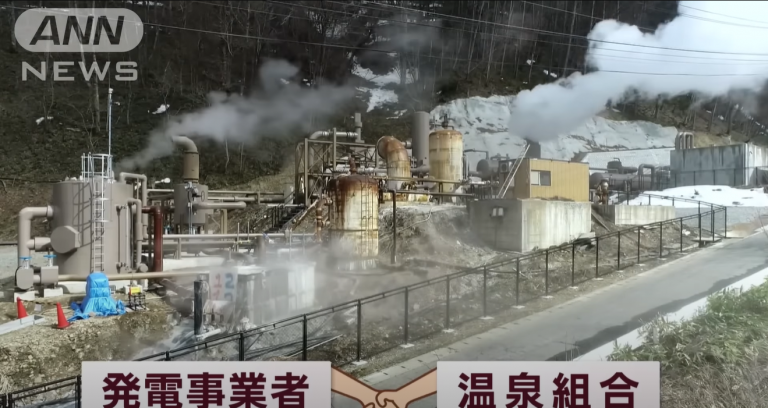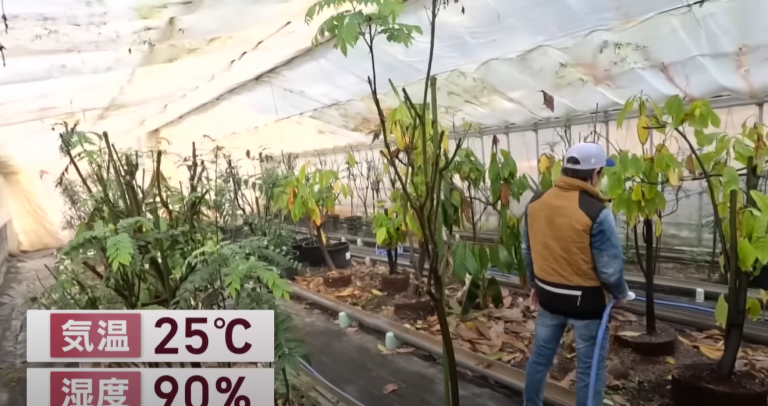
Rising maintenance costs of hot spring baths
At its peak in 1992, Okuhida Onsengo was visited by approximately 1.14 million people per year. By 2019, this number had been reduced to about half. With the decrease in the number of guests in recent years, the costs of maintaining the hot spring baths have become more burdensome. According to Masamitsu Uchino of the Nakao Onsen, the annual maintenance cost for the onsen was about 10 million yen.
Geothermal power co-existing with hot spring tourism
In late 2022, Nakao Geothermal Power Co. Ltd., a joint venture of Toshiba Energy Systems Co. Ltd. and Sea Energy Co. Ltd., part of Chubu Electric Power Group started commercial operations of the Nakao Geothermal Power Plant. The double-flash power plant has a maximum output of 1,998 kW.
The geothermal power plant in Nakao is unique because the separated brine downstream of the power plant is supplied for free to Nakao Onsen Co. Ltd. which is then distributed to the nearby hotels and inns. With this scheme, the costs for maintenance and management of hot spring wells has been significantly reduced.

The geothermal power plant in Nakao Onsen, Okuhida Onsengo, Japan (source: YouTube screenshot / ANN News Channel)
On the other hand, the power plant is able to generate electricity for about 4,000 households by securing sufficient steam. The impact on hot springs is constantly monitored and managed by the power producer. This is a mutually beneficial relationship between the power producer and the hot spring hotels and inns.
As Uchino said, the geothermal power plant has help in increasing employment and income for the local businesses. “Previously, we have to pay for things like cleaning of the wells. Now, the power generator provides abundant hot water. This is what we are most grateful for.”
Direct-use applications in Okuhida Onsengo
A geothermal power plant is also operational in the Takara Onsen, mainly managed and operated by a local union. However, local businesses have also started branching out into other uses of the geothermal energy.
Using hot spring water at 65 to 70 degrees Celsius, Ryota Shigeno is able to maintain the temperature and humidity necessary to grow bananas in a greenhouse. In the same farm, Shigeno also grows curry leaves native to India and cacao typically native in tropical regions. In another greenhouse, geothermal heat is used to grow dragon fruit that is typically grown in Central and South America.

Geothermal greenhouse at Okuhida Onsengo, Japan (source: YouTube screenshot / ANN News Channel)
Some houses in Okuhida Onsengo have harnessed geothermal heat for indoor and floor heating. This has reduced electricity bills, particularly helpful in current times when electricity costs have become higher.
Plans for more geothermal power generation
Right beside a hotel owned by Seiichi Ishida is the site of another planned geothermal power plant. Drilling for the project is already ongoing, currently at a depth of 1400 meters. The site is expected to have a 5-MW capacity, enough to generate electricity for 11,000 households.
The hotel or hot spring inn is also managed by Ishida. Aside from open-air baths, geothermal heat is used to grow eels and soft-shelled turtles. It has also allowed the hotel to sell a unique specialty – the “Okuhida Caviar.”
Ishida has lofty goals for Okuhida Onsengo, hoping to make it “Japan’s Saudi Arabia.”